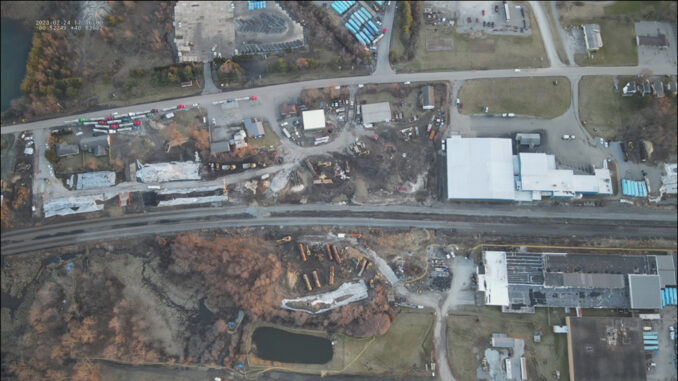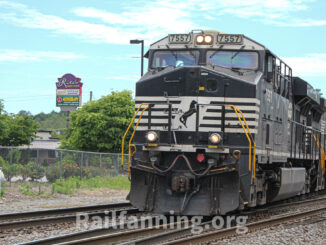
(The Center Square) – The Ohio Senate now gets a chance to weigh in on proposed new safety regulations and a drop in electric vehicle registration fees after the House passed a $12.6 billion two-year transportation budget.
Following the Feb. 3 train derailment in East Palestine, Ohio, the bill took aim at rail safety issues, including requiring the Public Utilities Commission of Ohio to ensure wayside detector systems are operational, effective and current and require a freight train or light engine to have at least a two-person crew.
Both those requirements have been opposed by the Ohio Rail Association, and similar language has been included in bipartisan federal legislation introduced earlier this week.
The House transportation budget also requires the PUCO and the Ohio EPA to submit a written report to the General Assembly regarding the transportation of hazardous materials and hazardous waste.
“This transportation budget takes a significant step forward in prioritizing rail safety in the state of Ohio,” said Rep. Michael Skindell, D-Lakewood. “We must continue to pass legislation that puts Ohioans’ safety and well-being first, while providing equitable investments in our communities.”
The House budget, which heads to the Senate, allows the Ohio Rail Development Commission to build and operate a high-speed passenger rail system that provides for connections at any point throughout the state, rather than only connections in Cleveland, Columbus and Cincinnati and places in between.
Also, beginning Jan. 1, the additional registration fee to plug-in hybrid electric vehicles will drop from $200 to $100.
Republican leadership touted the bill as a jobs-creator and an investment in the state’s infrastructure. It includes $2.2 billion for pavement, $717 million for bridges, $360 million for safety upgrades and $1.5 billion for large, capacity-adding projects.
“This is a jobs bill,” said Rep. Jay Edwards, R-Nelsonville. “This robust investment in Ohio’s infrastructure will move our state forward and strengthen our economic prosperity. Communities across the state will reap the benefits of this budget – whether that be through local projects or an increase in workforce opportunities.”
The House budget also creates the Rural Highway Fund, which is $1 billion in new money focused on projects that add capacity or reduce commute times to employment centers in counties that do not have a municipality of more than 65,000 residents.
Also included is funding the Brent Spence Corridor project, the bridge spanning the Ohio River between Ohio and Kentucky.
— J.D. Davidson




